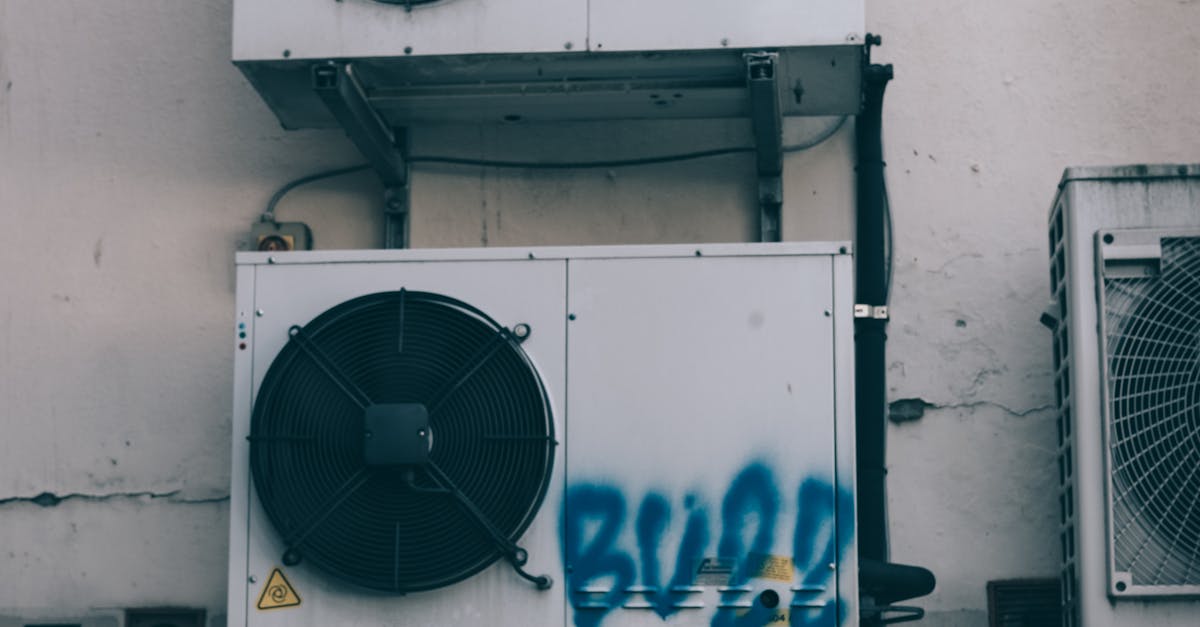
Can choosing the wrong capacity for a split system heating unit impact energy efficiency?
ignated oil ports on the fan motors. Be sure to use the manufacturer-recommended lubricant and avoid over-lubricating as this can cause damage to the motors. After lubrication, gently rotate the fan blades by hand to distribute the oil evenly. Regular maintenance of the fan motors will contribute to the longevity and optimal performance of your heating system.Yes, choosing the wrong capacity for a split system heating unit can impact energy efficiency. An undersized unit will have to work harder to heat the space, while an oversized unit may cycle on and off frequently, leading to energy wastage.
Inspecting the Drainage SystemShould I seek advice from HVAC professionals when selecting the capacity for a split system heating unit?
Inspecting the drainage system is a crucial part of maintaining a portable ductless split system heating unit. Over time, the drainage system can become clogged with dirt, debris, or mold. This can lead to water leakage or inefficient operation of the unit. Therefore, it is important to inspect the drainage system regularly to ensure it is clear and functioning properly.Yes, it's recommended to consult with HVAC professionals when selecting the capacity for a split system heating unit. They can provide expert advice based on the specifics of your space and heating needs.
Start by visually inspecting the drain lines for any visible signs of clogs or blockages. Check for any standing water or leaks around the unit, as these could indicate a problem with the drainage system. Next, remove the drain line and clean it thoroughly using a mixture of water and mild cleaning solution. Ensure that the drain line is completely clear before reattaching it to the unit. By taking these simple steps to inspect and clean the drainage system, you can help maintain the efficiency and longevity of your portable ductless split system heating unit.How can I balance my capacity needs with energy consumption when choosing a split system heating unit?
Clearing Clogs in Drain LinesTo balance capacity needs with energy consumption when choosing a split system heating unit, consider factors such as the efficiency rating of the unit, the insulation of your space, and any additional energy-saving features available.
To effectively clear clogs in drain lines of your portable ductless split system heating unit, follow these simple steps to ensure optimal performance. Begin by locating the condensate drain line, which is usually a white PVC pipe connected to the indoor unit and leads outside or to a drain. Inspect the drain line visually to check for any visible blockages or debris that might be causing the clog.
Next, disconnect the drain line carefully to avoid any spills or leaks. Use a wet/dry vacuum or a plumbing snake to clear the clog by applying gentle pressure to dislodge any buildup of dirt or algae. Once the clog is cleared, reconnect the drain line securely and test the system to ensure proper drainage. Regular maintenance of your drain lines will prevent future clogs and keep your portable ductless split system heating unit running efficiently.
Inspecting Electrical ConnectionsRelated Links
When inspecting electrical connections in your portable ductless split system heating unit, it is crucial to ensure that all connections are secure and free of any signs of damage or wear. Start by examining all wiring and terminals for any looseness or corrosion. Tighten any loose connections using the appropriate tools, taking care not to over-tighten which could lead to damage.Noise Levels of Ceiling-mounted Split System Heating Units
Furthermore, carefully inspect the insulation surrounding the electrical connections for any fraying or exposed wires. If any damage is detected, replace the affected wiring or insulation promptly to prevent any risks of electrical hazards. It is essential to conduct regular checks on the electrical connections to maintain the safety and functionality of your heating system.Comparison of Ceiling-mounted Split System Heating Brands
Tightening Loose Electrical ConnectionsClimate Control Options for Ceiling-mounted Split System Heating
When it comes to maintenance tasks for portable ductless split system heating units, ensuring that electrical connections are secure is crucial for safe and efficient operation. Over time, vibrations and general wear and tear can cause electrical connections to become loose, leading to potential safety hazards or system malfunctions. Regularly checking and tightening these connections is a simple yet essential step in preventing electrical issues.Remote Control Features for Ceiling-mounted Split System Heating